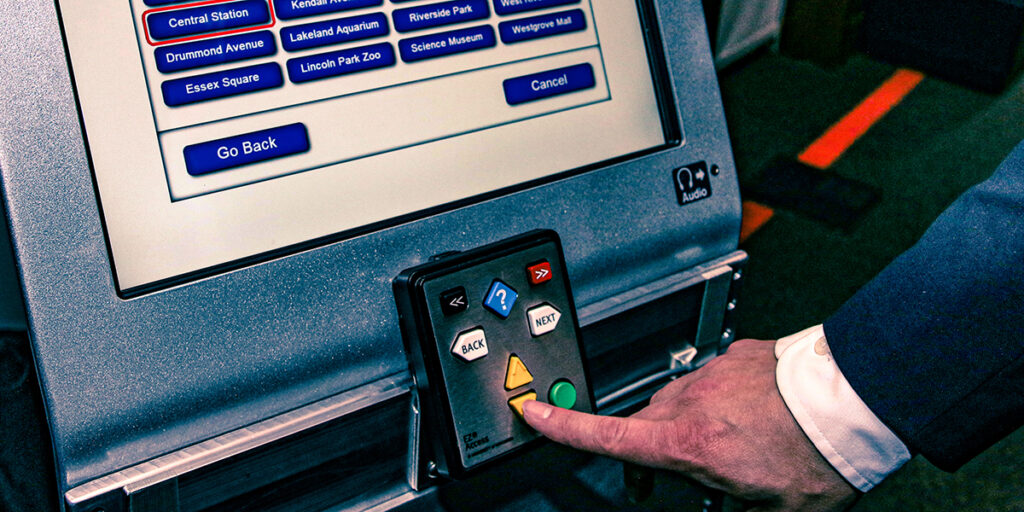EZ Access
The Trace R&D Center offers the following kiosk and touchscreen-based information and assistance for developers, purchasers, and for users with disabilities:
- We explain how to implement EZ Access® technologies to provide cross-disability seamless access.
- We provide expertise and technical assistance related to the purchase of accessible Kiosks or ATMs.
- We are a university research center – not a commercial entity.
- We have partnered with Assistra Technologies to license, certify, and commercial support EZ Access.

Overview
EZ Access…
- a simple set of interface enhancements which can be applied in the design of electronic products and devices so that they can be used by more people including those with disabilities.
- a proven way of making touchscreen-based devices cross-disability accessible and is currently used in thousands of kiosks and transaction machines across the country.
- involves a tactile keypad (square or linear) and software enhancements.
- is a low-cost strategy for complying with regulatory requirements (e.g., Section 508, ADA).
- enhancements can be applied to a wide range of interactive electronic systems, from public information and transaction machines such as touchscreen kiosks to personal handheld devices like cell phones.
- can be used by developers to create products and devices that are usable by more people, in a wider range of environments and contexts.
Certified implementations of EZ Access will meet ADA and 508. See EZ Access Implementations for examples. EZ® and EZ Access® are registered trademarks; licensing and trademark information can be obtained from the Wisconsin Alumni Research Foundation (WARF) or Assistra Technologies, which has partnered with WARF and the Trace Center. Additional details are in Frequently Asked Questions.

